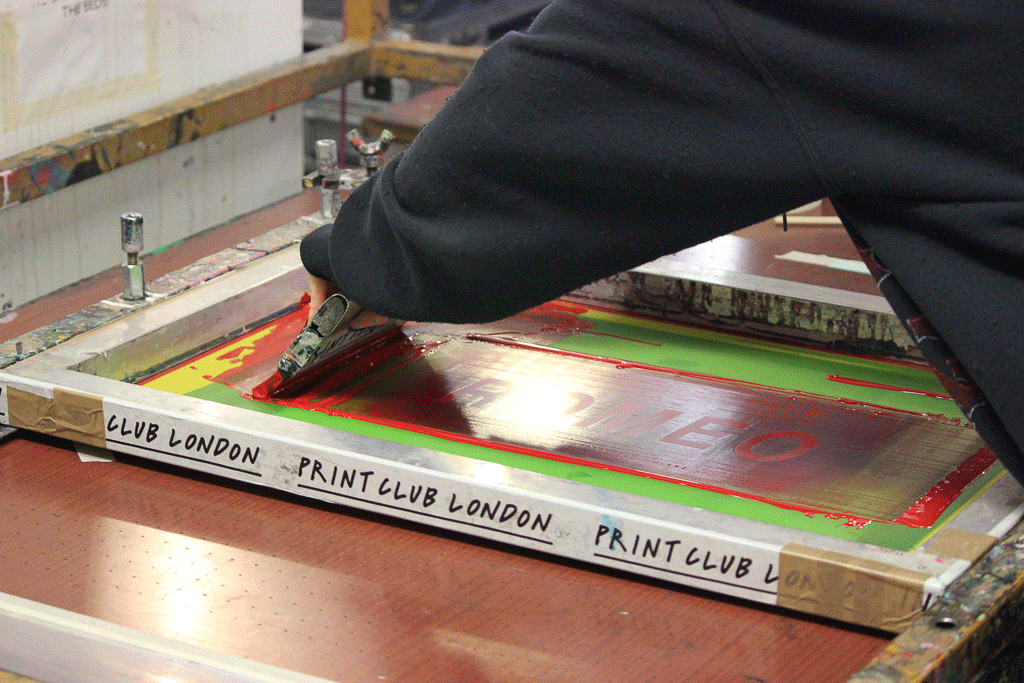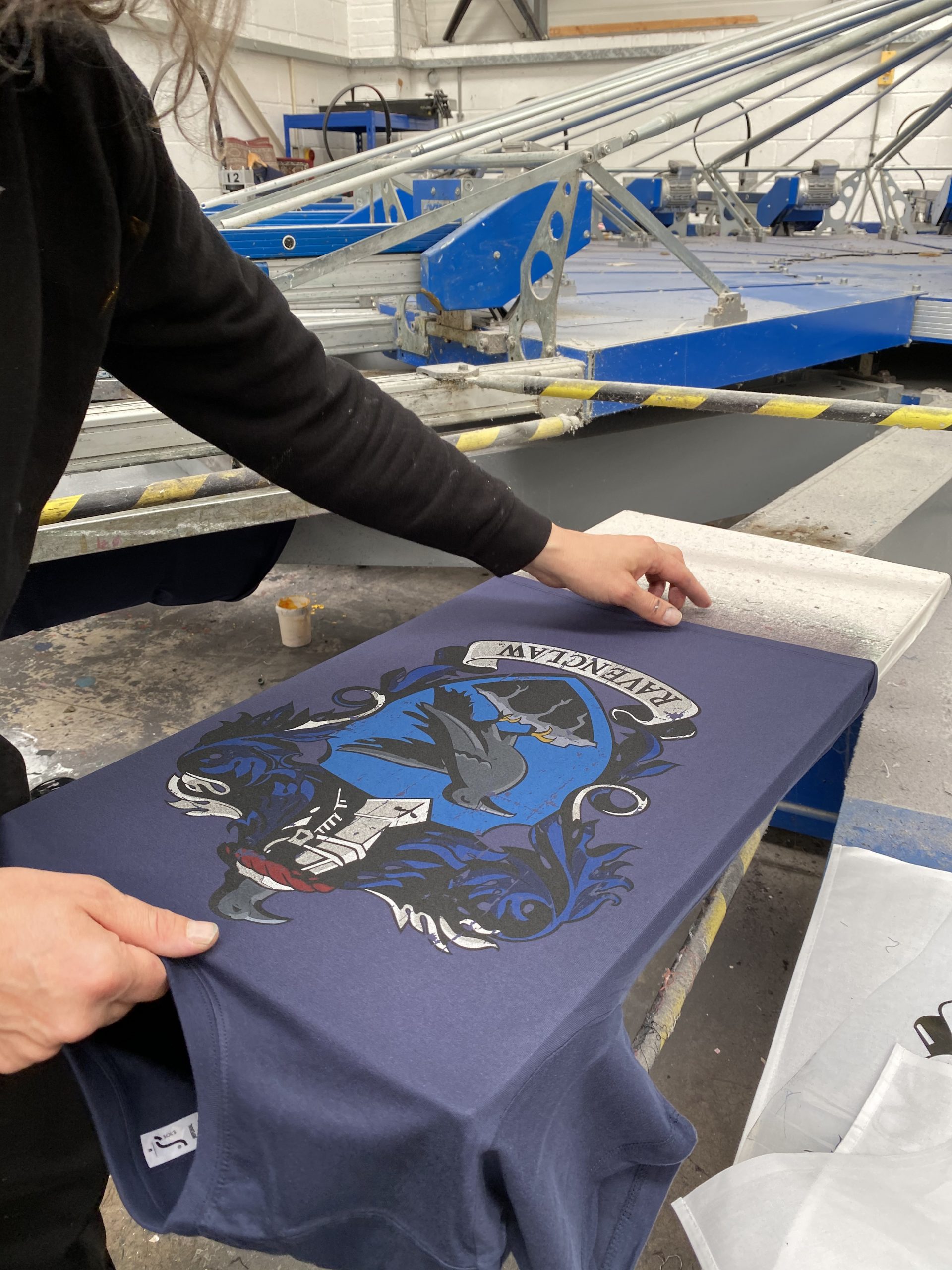Discover the Different Sorts Of Screen Printing Techniques for Your Next Project
Screen printing supplies a varied range of strategies that can enhance any type of imaginative task. From typical approaches like serigraphy to modern-day innovations such as direct-to-garment printing, each approach has its one-of-a-kind benefits. Specialized choices, consisting of environmentally friendly and metallic inks, present also extra opportunities. Understanding these techniques can considerably affect the final end result. However, the challenge exists in choosing one of the most appropriate approach for specific needs and desired effects. What factors should one think about?

The Essentials of Screen Printing
Although screen printing might seem complicated, it is essentially an uncomplicated procedure that includes transferring ink via a mesh screen onto numerous surface areas. The method begins with the creation of a pattern, which defines the style to be printed. This stencil is affixed to a mesh screen, normally made from polyester or nylon. When the stencil remains in location, ink is put on the screen and pressed with the mesh making use of a squeegee, causing the wanted pattern being printed on the underlying product.
Screen printing can be executed on a wide variety of substrates, including textile, plastic, and paper, making it a functional option for various tasks. The process permits vibrant colors and elaborate designs, making it preferred in industries such as style, marketing, and art. Recognizing these basics outfits people with the foundational expertise required to discover even more innovative techniques in screen printing.
Standard Screen Printing Techniques
Typical screen printing methods have actually been employed for centuries, protecting the workmanship and virtuosity of this technique. This method uses a mesh screen to move ink onto a substrate, such as textile or paper, permitting long-lasting and dynamic styles. The process begins with developing a pattern, which obstructs particular areas of the screen to regulate where the ink will certainly be used.
One prominent technique is serigraphy, commonly made use of for creative prints and restricted editions. An additional is the use of water-based inks, which are eco-friendly and supply a soft feeling on fabrics - 10:9 Design Embroidery. In addition, standard methods can include hand-operated printing, where artisans use ink with a squeegee, making sure precision and focus to information
These techniques remain valued in the sector for their tactile top quality and the one-of-a-kind textures they produce, appealing to both consumers and creators that value the heritage of screen printing.
Digital Screen Printing Innovations
As the need for faster manufacturing and personalization in the printing industry has risen, electronic screen printing innovations have actually become a game-changer. This technology mixes standard screen printing approaches with electronic processes, enabling rapid prototyping and detailed styles that were previously challenging to achieve. One significant innovation is the introduction of direct-to-garment (DTG) printing, which assists in top notch, full-color prints on various textiles without the demand for screens. Furthermore, advancements in ink solutions have actually caused environment-friendly choices that keep lively shades while reducing ecological impact. The use of automated systems additionally enhances manufacturing, decreasing labor costs and enhancing precision. These developments not only accommodate small set orders and personalized designs but likewise enable for quicker turn-around times, making them optimal for organizations concentrated on meeting customer needs in a fast-paced market. Digital screen printing, as a result, represents a necessary advancement in the domain of printing strategies.
Specialty Screen Printing Methods
Exploring specialty screen printing methods reveals a diverse variety of techniques that push the limits of imagination and performance in the printing sector. Among these, glow-in-the-dark inks offer a special visual impact, making layouts come alive in low-light problems. Metal inks, known for their glittering surface, include a touch of high-end to published materials. An additional ingenious approach is discharge printing, which gets rid of click here color from the fabric instead of adding ink, resulting in a soft, classic feeling. High-density printing develops an increased structure on the surface, boosting tactile interaction. In addition, water-based inks are gaining appeal for their lively colors and reduced ecological impact. Each of these specialty methods satisfies specific design needs, allowing musicians and brands to produce standout products that reverberate with their target markets. By leveraging these methods, organizations can elevate their screen printing projects to brand-new elevations, ensuring remarkable perceptions.
Eco-Friendly Screen Printing Options
Environmentally friendly screen printing alternatives are getting grip as the market moves towards sustainability. Lasting ink choices and making use of eco-friendly materials are key elements in minimizing the ecological influence of the printing procedure. By taking on these techniques, screen printers can add to a more lasting future while keeping high-grade results.
Lasting Ink Choices

Biodegradable Materials Use
As the screen printing industry progresses, the incorporation of biodegradable materials is becoming progressively vital for environmentally mindful techniques. Designers and suppliers are now discovering inks and substratums made from all-natural, renewable energies that disintegrate a lot more effectively than traditional counterparts. These eco-friendly options decrease plastic waste and minimize ecological influence, lining up with the expanding demand for sustainable products.
Usual instances include water-based inks and organic cotton textiles, both of which reduce hazardous chemicals and advertise eco-friendliness. Brand names that adopt these products usually improve their market appeal, bring in customers who focus on sustainability. As recognition of ecological concerns proceeds to climb, the change in the direction of eco-friendly products in screen printing is most likely to get energy, promoting a greener industry standard.
Choosing the Right Technique for Your Job
How can one establish the most appropriate screen printing technique for a specific job? The choice pivots on several variables, consisting of the material to be printed on, the intricacy of the layout, and the preferred production quantity - 10:9 Design LLC Company. Direct-to-garment printing is ideal for detailed styles with many colors, while traditional screen printing excels for bigger runs of simpler graphics.
In addition, consideration of the end-use of the published thing is necessary. For exterior applications, techniques that provide longevity and weather resistance, such as plastisol ink, might be preferred. Alternatively, environmentally-conscious tasks might take advantage of water-based inks or eco-friendly materials.
Inevitably, understanding the project's special demands permits an enlightened selection, making sure both visual charm and useful durability. By reviewing layout intricacy, product compatibility, and manufacturing scale, one can efficiently select one of the most proper screen printing strategy to satisfy their project's objectives.
Frequently Asked Questions
What Is the History of Screen Printing?
Screen printing came from old China around 1000 AD, evolving with Japan and Europe. By the 20th century, it came to be popular in business art and style, revolutionizing how designs were created and dispersed worldwide.

Just how Do I Prepare Art Work for Screen Printing?
To prepare artwork for screen printing, one need to ensure high resolution, utilize an ideal shade mode, create different layers for each shade, and convert text to outlines, ensuring compatibility with the printing procedure and desired end result.
What Materials Are Best for Screen Printing?
The finest materials for screen printing consist of high-grade inks, long lasting screens, and appropriate substrates like cotton, polyester, or blends. Furthermore, using appropriate emulsion and mops can improve the printing procedure and outcomes.
Can I Screen Publish in your home?
Yes, screen printing in the house is possible. With the appropriate products, arrangement, and techniques, individuals can produce top quality prints. Nonetheless, careful consideration of office and tools is essential for effective results.

What Prevail Mistakes in Screen Printing?
Typical mistakes in screen printing include inappropriate direct exposure times, poor ink consistency, imbalance of displays, not enough cleansing of products, and ignoring to evaluate prints. These errors can compromise the top quality and accuracy of the end product.
Screen printing might seem facility, it is essentially a straightforward procedure that includes moving ink via a mesh screen onto numerous surfaces. As the demand for faster manufacturing and modification in the printing industry has risen, digital screen printing innovations have actually emerged as a game-changer. Checking out specialty screen printing techniques reveals a varied selection of techniques that push the limits of creative thinking and functionality in the printing market. The best materials for screen printing consist of top notch inks, resilient displays, and suitable substrates like cotton, polyester, or blends (10:9 Design Embroidery). Usual mistakes in screen printing consist of inappropriate exposure times, insufficient ink uniformity, misalignment of displays, not enough cleaning of materials, and disregarding to evaluate prints